Have you ever watched a hamster dart through a maze, nimbly weaving through tunnels and scaling tiny bridges, and thought, Wow, that little fluffball is smarter than I expected? You’re not alone! Hamsters, despite their tiny size, possess impressive problem-solving skills and spatial awareness. But can they truly learn to navigate miniature worlds with purpose and precision? The answer is a resounding yes—with the right training, of course!
A Fun Exploration of Hamster Intelligence and Spatial Navigation
Hamsters may not have the cognitive power of dogs or the puzzle-solving prowess of rats, but they are naturally curious creatures with an instinct for exploration. In the wild, they rely on memory and scent cues to navigate their burrows, mapping out tunnels and food storage areas with surprising accuracy. This innate ability makes them excellent candidates for learning to navigate miniature worlds, whether it’s a simple DIY maze or an elaborate hamster-sized city.
The Rise of Miniature Hamster Worlds and Mazes
The internet has played a huge role in popularizing hamster mazes and obstacle courses. YouTube channels and social media accounts dedicated to hamster adventures have showcased these tiny rodents conquering everything from intricate cardboard labyrinths to hamster-sized Ninja Warrior courses. These setups are more than just adorable entertainment—they offer mental stimulation, physical exercise, and an enriching way to engage with your pet.
As more hamster owners discover the joy of designing and training their pets in miniature worlds, the possibilities are expanding. Some people even create full-fledged “hamster cities” with tiny buildings, roads, and interactive elements. But while these worlds may look impressive, the key question remains: can hamsters actually learn to navigate them with intent rather than just wandering randomly? That’s exactly what we’re here to explore!
What This Article Will Cover
In this guide, we’ll dive into:
- Hamster intelligence and how their natural instincts help them navigate
- How to design a miniature world that is both fun and safe for your pet
- Training techniques to help your hamster learn specific paths and directional cues
- Common challenges and how to troubleshoot them
- Advanced training ideas to take your hamster’s navigation skills to the next level
By the end of this article, you’ll have all the knowledge you need to build an engaging miniature world and train your hamster to navigate it like a pro. So, grab some treats, gather your crafting supplies, and let’s get started on this tiny adventure! ✨
Are Hamsters Smart Enough to Navigate Mini Worlds?
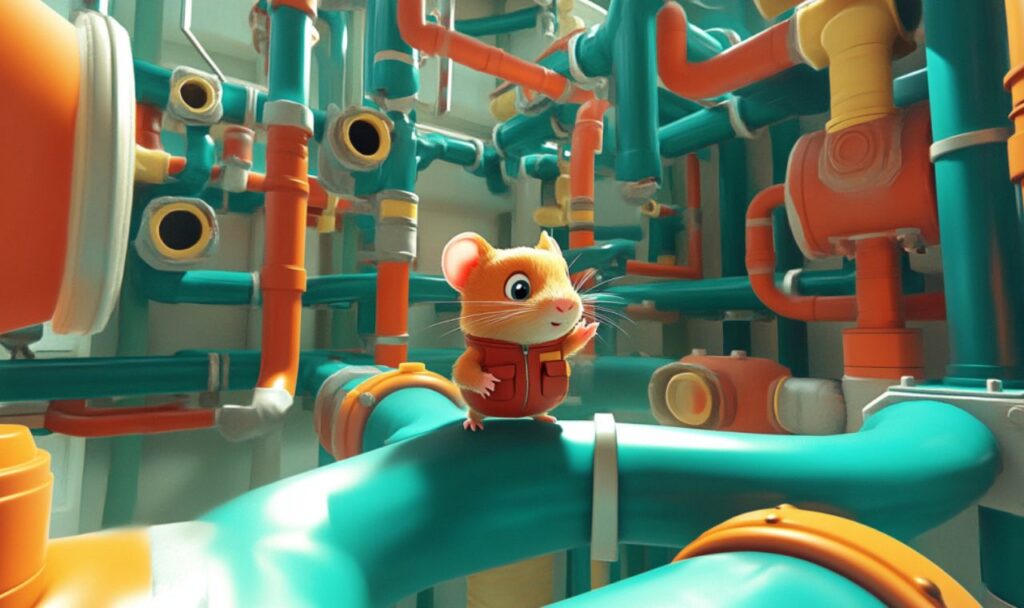
If you’ve ever watched your hamster dash through tubes, weave through tunnels, or somehow find their way back to their hideout after a night of exploring, you might have wondered just how smart they are. While hamsters may not have the same problem-solving abilities as rats, they possess an impressive natural intelligence that allows them to explore, remember pathways, and adapt to new environments. Their ability to learn makes them great candidates for maze training and navigating miniature worlds.
The Cognitive Abilities of Hamsters
Hamsters rely on both memory and instinct to move through their surroundings. Their short-term memory allows them to recall paths and recognize familiar routes, while their long-term memory helps them build mental maps of their territory. With repeated exposure, they can improve their ability to navigate, making them capable of learning structured paths inside mazes or miniature worlds.
Since hamsters have poor eyesight, they rely heavily on their other senses, particularly their sense of smell. By leaving scent trails, they create an invisible map of their surroundings, which helps them recognize where they’ve been. This explains why a hamster that initially seems lost in a maze can suddenly find its way—it’s using scent markers as a guide. In addition to scent, hamsters use their whiskers to detect textures and surfaces, helping them gauge distances and navigate even in the dark.
Scientific research on rodent intelligence has shown that hamsters can learn through repetition and reinforcement. While they may not understand commands like a dog, they can associate specific cues with actions, especially when there’s a reward involved. Studies have demonstrated that hamsters placed in mazes gradually improve their completion times, showing they are capable of spatial learning and problem-solving.
How Hamsters Explore Their Environment
Hamsters are natural explorers. In the wild, they dig elaborate burrows with tunnels and separate chambers for sleeping, storing food, and hiding from predators. This ability to create and remember intricate pathways translates well into learning artificial mazes or miniature worlds. When placed in a new environment, they start by cautiously exploring, mapping out pathways, and gradually recognizing key landmarks.
Their navigation is largely instinctive. They establish a mental blueprint of their surroundings using scent and familiar objects. If something in their habitat changes, they take time to re-learn the layout. The same process happens when they are introduced to a maze. At first, they move randomly, sniffing and exploring, but over time, they begin to remember key turns and shortcuts. This adaptability proves that hamsters aren’t simply wandering aimlessly but are actively learning as they explore.
Real-Life Examples of Trained Hamsters
Many hamster owners have successfully trained their pets to navigate mazes and obstacle courses. Social media is filled with videos of hamsters completing complex routes, running through tunnels, crossing tiny bridges, and even making decisions about which path to take. Some hamsters have become internet sensations, famous for their impressive navigation skills.
A well-known example is “Mr. Hamster Maze,” a tiny rodent who has conquered elaborate obstacle courses, including see-saws, spinning platforms, and multi-level mazes. Another popular hamster, Hamtaro, was trained to explore a miniature city with roads, buildings, and street signs, demonstrating that these little animals can learn to navigate structured environments with practice.
Beyond internet fame, many hamster owners have noticed their pets improving over time when trained consistently. Some hamsters learn to follow scent trails left by treats, while others respond to visual landmarks, like colored walls or unique objects placed at key turns. One owner reported that their Syrian hamster could complete a basic maze in under a minute after just a few training sessions, while another found that their dwarf hamster preferred following familiar routes rather than exploring new paths.
Different hamster breeds also display variations in learning ability. Syrian hamsters, being larger and more deliberate in their movements, often excel in maze training. Dwarf hamsters, like Roborovskis, are quick and energetic but may be harder to train due to their rapid, unpredictable movements. Despite these differences, all hamsters have the potential to learn and navigate with the right encouragement.
Final Thoughts on Hamster Intelligence and Navigation
Hamsters may not be the first animal that comes to mind when thinking of intelligence, but they are much smarter than they seem. Their ability to learn through repetition, use scent and spatial cues, and remember paths over time makes them excellent candidates for training. With patience and the right approach, your hamster can develop the skills to navigate miniature worlds and mazes like a tiny adventurer.
Now that we understand their intelligence and ability to learn, the next step is designing the perfect miniature world to challenge and engage them!
Designing a Miniature World for Your Hamster
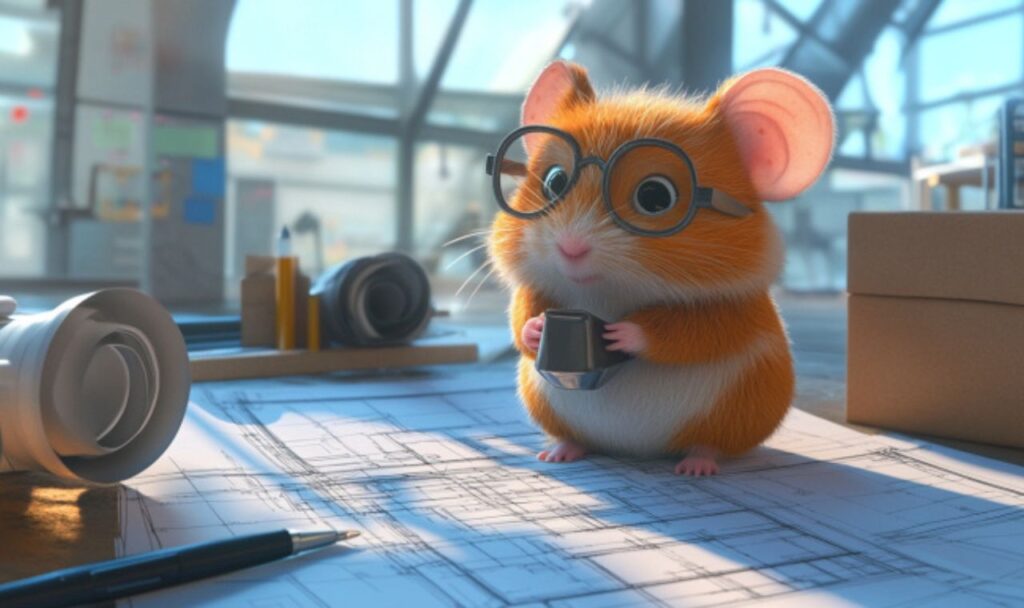
Building a miniature world for your hamster is an exciting way to enrich their environment, challenge their natural instincts, and strengthen your bond with them. Whether you want to create a simple maze or an elaborate hamster city, careful planning ensures your pet’s safety while making the experience fun and engaging. A well-designed miniature world should encourage exploration, stimulate problem-solving, and provide a safe space for your hamster to move around naturally.
Creating the perfect setup involves choosing safe materials, designing an engaging layout, and ensuring that your hamster remains happy and stress-free while exploring their tiny world. By taking the time to plan and customize the environment, you can provide your hamster with an interactive playground that keeps them mentally and physically stimulated.
Choosing the Right Materials
Selecting the right materials is the first step in building a miniature world that is both durable and hamster-friendly. Since hamsters love to chew on everything, it’s crucial to use materials that are safe if ingested. Cardboard, untreated wood, and non-toxic plastics are all excellent choices, but each comes with its own advantages and limitations.
Cardboard is an inexpensive and widely available option that is easy to cut and shape into tunnels, walls, and ramps. However, it absorbs moisture and can deteriorate quickly, so it may need frequent replacement. Untreated wood is another great option, offering a sturdy and chew-resistant structure that mimics a hamster’s natural burrow environment. Just make sure to avoid woods like cedar or pine, as they can release harmful aromatic oils. Non-toxic plastic materials can be used for durable structures like bridges or platforms, but they should be smooth-edged to prevent injuries.
When designing your miniature world, you’ll also need to decide between creating a DIY setup or purchasing a pre-made playset. DIY setups allow for customization and creativity, giving you control over the design and layout. You can use household materials like tissue boxes, toilet paper rolls, and popsicle sticks to build tunnels and ramps. Store-bought playsets, on the other hand, offer pre-designed structures that are often modular and easy to assemble. While they can be convenient, they may not always provide the same level of customization as a handmade world.
Regardless of the materials you choose, safety should always come first. Avoid small gaps where your hamster could get stuck, and ensure that there are no sharp edges or loose parts that could pose a hazard. It’s also essential to check for toxic glues, paints, or dyes that could be harmful if chewed. By selecting safe and sturdy materials, you’ll create a secure environment that your hamster can explore with confidence.
Creating an Engaging Layout
A well-designed miniature world should be more than just a collection of walls and tunnels—it should offer a stimulating and interactive experience for your hamster. Incorporating tunnels, bridges, ramps, and obstacles helps mimic the complexity of a hamster’s natural habitat, keeping them engaged and encouraging problem-solving.
Tunnels are a must-have feature, as hamsters naturally enjoy burrowing and hiding. You can use cardboard tubes, PVC pipes, or flexible plastic tunnels to create winding pathways. Bridges and ramps add another layer of challenge, encouraging your hamster to climb and explore different levels. If you’re feeling creative, you can even add seesaws, spinning platforms, or tiny ladders for extra variety.
Adding landmarks within the miniature world helps your hamster develop a sense of direction. Objects like small wooden blocks, colored walls, or even distinct textures can serve as reference points, making it easier for your hamster to recognize different areas. Over time, they will start to memorize familiar routes, improving their ability to navigate the space more efficiently.
To further encourage exploration, you can use treats and scents to guide your hamster along specific paths. Placing tiny pieces of their favorite snack at key points can motivate them to move through tunnels or cross bridges. You can also rub a small amount of their bedding onto certain areas to make them feel more familiar. Just be sure to use treats in moderation to avoid overfeeding.
The goal of an engaging layout is to create a dynamic environment that challenges your hamster without overwhelming them. By combining tunnels, bridges, and recognizable landmarks, you can design a space that stimulates their curiosity and keeps them coming back for more adventures.
Keeping It Fun and Safe
While designing a visually exciting miniature world is important, ensuring your hamster’s safety and comfort is even more crucial. A well-ventilated and accessible environment prevents stress and allows your hamster to explore without difficulty. Open-top designs are often the best option, as they provide fresh air circulation while allowing you to monitor your hamster’s movements. If using enclosed tunnels, make sure there are exit points and that they are wide enough for your hamster to pass through comfortably.
Hamsters can sometimes become overwhelmed or frustrated if they find an environment too challenging. It’s important to monitor their behavior for signs of stress, such as excessive grooming, freezing in place, or attempting to escape. If your hamster repeatedly struggles in certain areas, consider simplifying the design or offering an easier alternative route. The goal is to build their confidence, not to create an experience that causes anxiety.
Adjustments may also be needed over time to keep the miniature world exciting. Changing the layout periodically, swapping out different obstacles, or adding new tunnels can prevent boredom and encourage continued exploration. Rotating elements also helps maintain your hamster’s interest and gives them fresh opportunities to learn and navigate.
By focusing on safety, engagement, and adaptability, you can create a miniature world that provides endless enrichment for your hamster. Whether it’s a simple maze or an intricate city, the key is to make it an interactive space that aligns with your hamster’s natural behaviors.
Training Your Hamster to Navigate a Maze
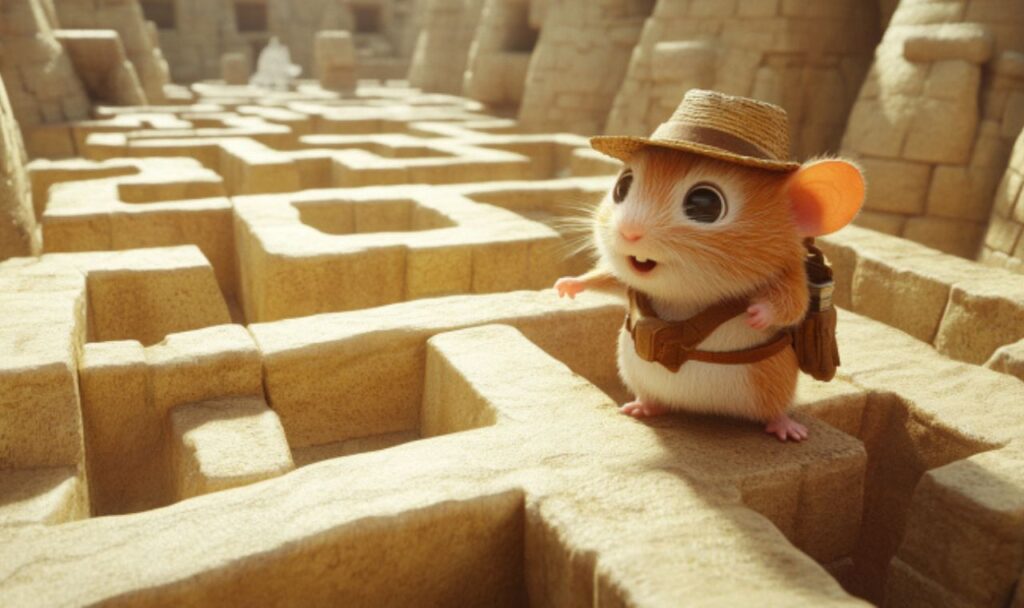
Once you’ve built an exciting miniature world for your hamster, the next step is teaching them how to navigate it! While hamsters rely on their natural instincts to explore, structured training can help them learn specific paths and improve their ability to navigate mazes with purpose rather than just wandering randomly. With patience and the right techniques, your hamster can become a tiny maze master, confidently making their way through tunnels, ramps, and obstacles.
Training should always be a fun, stress-free experience for your hamster. By introducing them gradually, using positive reinforcement, and increasing difficulty over time, you can help them develop their problem-solving skills while keeping them engaged.
Introducing Your Hamster to the Maze
The first step in training is allowing your hamster to get comfortable with the maze at their own pace. Rather than expecting them to complete the entire course immediately, let them explore freely so they can get used to the structure and layout.
To encourage exploration, place small treats along different sections of the maze. Hamsters are highly food-motivated, so using their favorite snacks as rewards will help them associate movement through the maze with positive experiences. However, it’s important not to overdo it—tiny pieces of healthy treats like sunflower seeds or fresh veggies work best.
Familiar objects, such as a small piece of their bedding or a toy from their cage, can also make the maze feel less intimidating. If your hamster recognizes familiar scents, they’ll feel more confident in their new environment. Some hamsters may immediately start exploring, while others might need multiple short sessions to warm up to the idea.
Positive reinforcement plays a huge role in maze training. Rewarding your hamster with gentle praise, treats, or even petting (if they enjoy it) reinforces the idea that navigating the maze is a good experience. Avoid forcing them to move in a certain direction or rushing their progress—hamsters learn best when they feel safe and in control of their actions.
Teaching Directional Cues
Once your hamster is comfortable with the maze, you can begin introducing directional cues to guide their movement. Since hamsters primarily rely on their sense of smell, creating scent trails can be an effective way to encourage them to follow a specific path. You can do this by rubbing a tiny amount of food (like a piece of apple or cucumber) along the correct route or by strategically placing small treats at key turns.
Another useful technique is associating sounds or lights with specific directions. For example, gently tapping on the surface near a certain path can encourage them to move in that direction. If you use a soft click or verbal cue each time your hamster takes the correct turn, they may begin to recognize and respond to the sound over time. Some owners have even used LED lights to indicate which path is open, although results vary depending on the hamster’s personality.
Repetition is key when reinforcing learned paths. If your hamster successfully completes a simple route, encourage them to repeat it over multiple sessions before making the maze more complex. The more they practice, the stronger their memory of the path will become. Just like humans learning a new skill, hamsters benefit from gradual, consistent exposure to a challenge.
Increasing Difficulty Over Time
Once your hamster has mastered a basic route, you can start increasing the complexity of the maze by adding new paths, obstacles, or dead ends. This keeps the challenge engaging and prevents them from simply memorizing a single route. By gradually introducing more twists and turns, you help develop their problem-solving skills while keeping training sessions fun.
Timing their runs is another great way to track progress. If your hamster starts completing the maze faster over time, it’s a sign that they are learning and remembering the correct paths. You can gently challenge them by setting small goals, such as completing the maze in a certain timeframe or finding alternative routes.
Every hamster learns at their own pace, so it’s important to adjust the challenge level based on their abilities. Some may take longer to learn new paths, while others may quickly adapt and look for new challenges. The key is to make sure your hamster stays engaged without becoming frustrated. If they seem to lose interest or become hesitant, consider simplifying the maze temporarily before increasing difficulty again.
By following these training techniques, you’ll help your hamster develop their navigation skills in a way that’s both fun and rewarding. Watching your tiny adventurer conquer new mazes and obstacles is not only entertaining but also a great way to bond with your pet!
Common Challenges & How to Overcome Them

Training a hamster to navigate a maze or a miniature world can be a rewarding experience, but it’s not always smooth sailing. Like any learner, hamsters may encounter difficulties along the way, whether it’s a lack of motivation, frequent navigation mistakes, or simply losing interest in the challenge. The key to success is patience, positive reinforcement, and adapting the training process to suit your hamster’s individual personality.
Understanding common challenges and how to address them will help ensure that maze training remains an enjoyable activity for both you and your furry friend.
When Your Hamster Refuses to Participate
It can be frustrating when you’ve spent time designing a fun maze, only to have your hamster ignore it completely. If your hamster isn’t engaging with the maze, there are several possible reasons for their hesitation.
Stress and fear are common obstacles, especially if your hamster is still getting used to their environment or if they are naturally more skittish. A hamster that feels unsafe is unlikely to explore new spaces, so it’s important to ensure that their training area is quiet, free from sudden movements, and enclosed enough to prevent feelings of vulnerability. If your hamster freezes in place or refuses to leave their starting point, try placing a small familiar object, like a bit of their bedding or a chew toy, in the maze to make them feel more at home.
Lack of motivation can also play a role. Hamsters are naturally curious but need encouragement to explore unfamiliar spaces. Placing tiny food rewards along the path can help entice them to move forward. However, if your hamster still seems uninterested, they might simply not be in the mood to train. Hamsters are most active during the evening and night, so try adjusting training sessions to match their natural energy levels.
Building confidence takes time, so start with a very simple setup. A short, straight tunnel is often easier for a hesitant hamster to navigate than a full maze with multiple turns. Gradually increase the complexity as they become more comfortable moving through different paths. If your hamster consistently refuses to engage, give them a break and try again later. Every hamster learns at their own pace, and forcing them to train when they are not interested can create a negative association with the maze.
Handling Navigation Mistakes
Even after a hamster has begun exploring their maze, they may get stuck, take wrong turns, or appear confused. This is a normal part of the learning process, and with the right guidance, they can improve over time.
If your hamster gets stuck in a dead-end or hesitates at a corner, resist the urge to pick them up and reposition them immediately. Instead, use gentle encouragement to help them find their way. A tiny treat placed just beyond the correct path can act as a motivator, while lightly tapping near the right direction can also guide them. Avoid loud noises or sudden gestures, as these may startle your hamster and make them reluctant to continue.
Taking the wrong path is another common issue, especially in more complex mazes. Rather than correcting them outright, allow them some time to explore and learn from their own mistakes. Hamsters rely on trial and error to map out their environment, and over time, they will start remembering which routes work and which ones don’t. If they repeatedly take the wrong turn, you can gently block off incorrect paths or use subtle scent trails to guide them toward the correct direction.
Celebrating small successes is crucial to keeping your hamster engaged. Even if they only make a small improvement, such as correctly navigating one section of the maze, reward them with a tiny treat or gentle praise. Positive reinforcement helps build their confidence and makes them more likely to continue participating in the training process.
Avoiding Overtraining and Burnout
While maze training can be a fun and stimulating activity, it’s important to recognize when your hamster has had enough. Overtraining can lead to frustration, boredom, or even stress, which can make them less interested in future sessions.
Signs of fatigue or disinterest include excessive grooming, stopping in the middle of the maze for long periods, or attempting to escape rather than exploring. If your hamster starts losing focus or seems restless, it’s best to end the session and let them rest. Training should always be a positive experience, so never force your hamster to continue if they seem uninterested.
Keeping training sessions short is key to maintaining their enthusiasm. Five to ten minutes is usually enough for a single session, especially when they are still learning. You can always do multiple short sessions throughout the week rather than trying to accomplish everything in one go.
To prevent boredom, try rotating maze layouts or changing up obstacles every few sessions. Introducing small variations, like adjusting tunnel placements or adding new landmarks, can keep the experience fresh and exciting. If your hamster has mastered a particular maze, consider increasing the challenge slightly, but always within their comfort zone.
By paying attention to your hamster’s needs and adapting the training accordingly, you can create an enjoyable experience that stimulates their mind and strengthens their confidence. Training should always be a fun and rewarding activity, both for you and your tiny explorer!
The Future of Hamster Maze Training
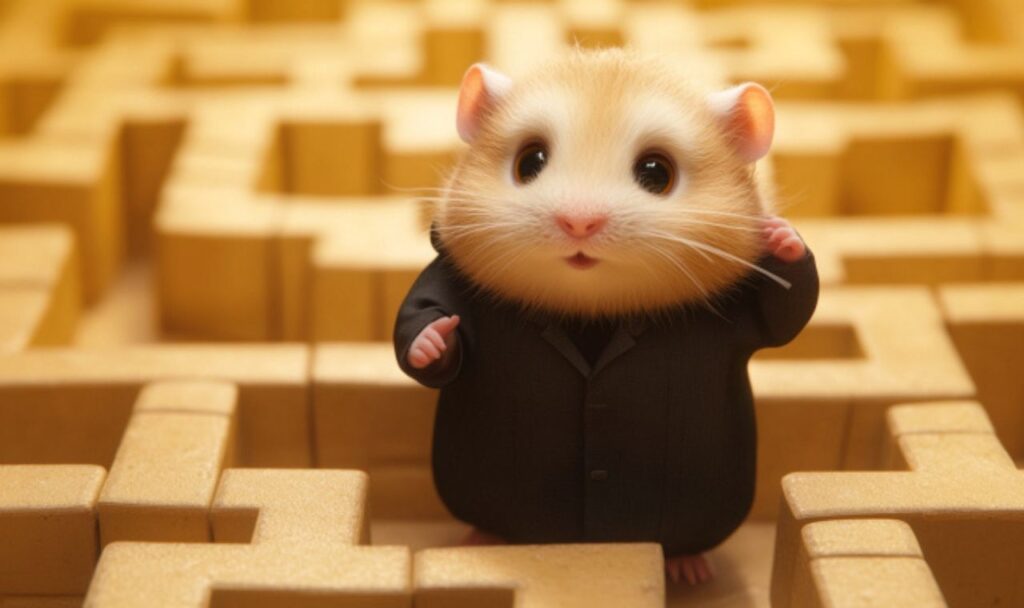
As hamster owners continue to experiment with new ways to enrich their pets’ lives, maze training is becoming more advanced and creative. What started as simple cardboard tunnels has evolved into elaborate obstacle courses, multi-level mazes, and even smart pet technology designed to challenge hamsters’ cognitive abilities. The question now is: how far can hamster training go?
The future of hamster maze training lies in pushing the limits of their learning ability, incorporating technology, and keeping the experience fun and engaging for both pets and owners. As we explore these possibilities, we may uncover even more ways to stimulate our tiny companions while strengthening our bond with them.
Can Hamsters Learn More Complex Paths?
Hamsters have already proven that they can navigate simple mazes, but could they master something even more intricate, like multi-level courses or branching paths that require decision-making? Many owners are starting to experiment with vertical mazes that include ramps, platforms, and multiple floors, challenging hamsters to not only remember turns but also navigate different heights.
One of the most fascinating aspects of hamster intelligence is their ability to retain information over time. Some studies suggest that rodents, in general, have a remarkable capacity for spatial memory, meaning that with consistent training, a hamster could remember specific routes for extended periods. This opens up the possibility of designing more advanced training programs where hamsters not only complete mazes but also recall previous pathways and apply them to new challenges.
Another factor to consider is how different environments affect learning. A maze built in a familiar setting, like inside their playpen, may be easier for a hamster to navigate than one introduced in a completely new space. Owners experimenting with portable mazes or changing training locations might find that hamsters take longer to adapt but eventually build a stronger overall sense of navigation.
As training techniques evolve, it will be interesting to see just how much hamsters can learn and whether they can be trained to navigate specific paths on command or even differentiate between multiple routes based on cues.
The Role of Technology in Training
With advancements in pet technology, hamster training could soon incorporate smart devices designed to analyze and enhance their learning experience. Smart pet toys, like interactive treat dispensers and automated maze challenges, could be used to encourage problem-solving while rewarding hamsters for correct navigation choices.
Some owners have already started using small cameras to track their hamster’s navigation behavior, studying how they choose routes and whether they rely more on memory, scent, or environmental cues. By analyzing their movements over time, we may be able to develop better training methods that cater to how hamsters naturally learn.
One exciting possibility for the future is the creation of modular, programmable mazes that change configurations automatically. With adjustable pathways, doors that open based on sensor triggers, or even small LED indicators to guide movement, these high-tech mazes could provide ever-evolving challenges for hamsters, keeping training fresh and engaging.
Beyond just training, these innovations could also be used for scientific research on rodent cognition, helping us better understand how hamsters process information and learn new tasks. While we’re still in the early stages of integrating technology into small pet enrichment, the potential is vast and promising.
Making It a Fun, Ongoing Activity
One of the most important aspects of maze training is ensuring that it remains enjoyable for both the hamster and the owner. As with any form of pet enrichment, variety and creativity are key to keeping engagement levels high. Regularly introducing new challenges, such as changing maze layouts, adding new obstacles, or incorporating different sensory cues, can prevent boredom and keep your hamster excited about training.
Sharing progress with the hamster community can also be a great way to stay motivated and gain inspiration. Social media platforms and online forums are filled with hamster enthusiasts showcasing their pets’ maze-solving skills, exchanging training tips, and even holding friendly competitions to see whose hamster can complete a course the fastest. This kind of community interaction not only provides valuable insights but also encourages owners to push the boundaries of what their hamsters can achieve.
At its core, maze training is about more than just navigation—it’s about bonding with your hamster, understanding their natural instincts, and providing them with an enriching, stimulating experience. As we look to the future, it’s exciting to imagine the new possibilities that will emerge, making hamster training an even more engaging and rewarding activity. Whether through advanced mazes, smart technology, or simply creative new designs, one thing is certain: the world of hamster maze training is just getting started!
Hannah’s Training Tactics: Quick Tips for Success!
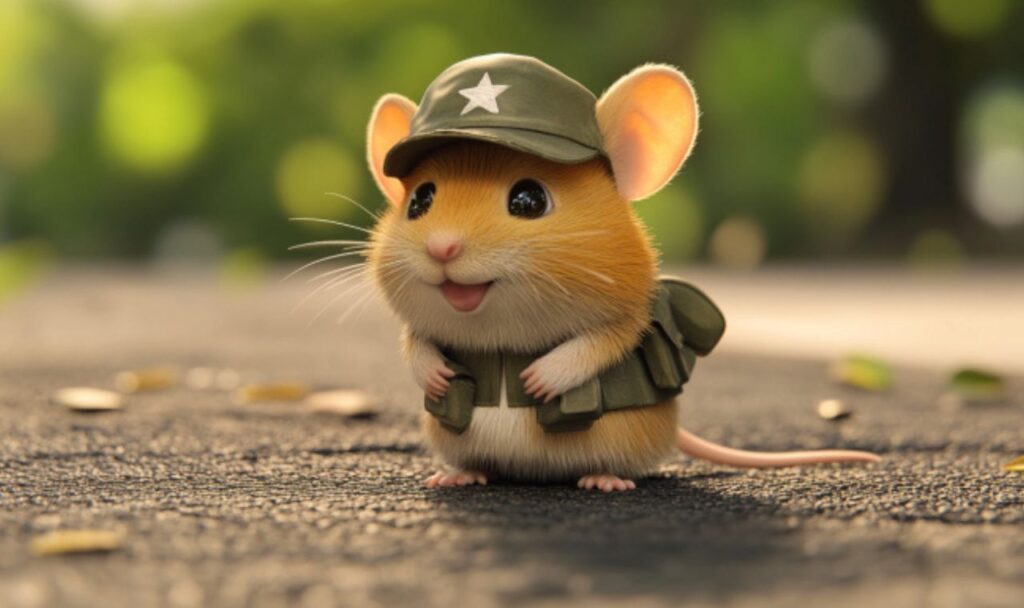
Training your hamster to navigate a maze or miniature world should be a fun and rewarding experience for both of you. While hamsters have natural curiosity and problem-solving abilities, they also have short attention spans and unique personalities that require patience and gentle encouragement. To make the training process as smooth and enjoyable as possible, here are some quick but effective tips to ensure success.
Start with Simple Layouts and Gradually Increase Complexity
One of the biggest mistakes new trainers make is creating a maze that is too complicated right from the start. While it’s tempting to build an intricate labyrinth with multiple levels and dead ends, your hamster may become overwhelmed and lose interest. Instead, begin with a straightforward path—a single tunnel or a U-shaped route is a great starting point.
Once your hamster confidently navigates the simple design, gradually introduce new elements like gentle curves, additional turns, or small bridges. Over time, you can create more advanced structures with multiple paths, obstacles, or even a second level. Allow your hamster to master each stage before increasing difficulty so they remain engaged without feeling frustrated.
Use Treats and Familiar Scents to Encourage Exploration
Hamsters are highly food-motivated, so using small, healthy treats can be a great way to guide them through the maze. Placing a tiny sunflower seed, oat, or a small piece of fruit at key points along the path encourages them to move forward and associate exploration with positive rewards.
In addition to treats, scent can play a powerful role in training. Since hamsters rely heavily on their sense of smell, you can use familiar scents to help them navigate. Rubbing a tiny bit of their bedding along certain paths or placing an object from their cage in the maze can provide comfort and reduce hesitation. If your hamster seems particularly nervous, adding a piece of their favorite hideout or chew toy can make the new environment feel more familiar.
Keep Training Sessions Short—5-10 Minutes Max
Hamsters have short attention spans and can become tired or bored quickly. To prevent frustration and keep them engaged, limit training sessions to about 5–10 minutes at a time. If your hamster seems excited and eager to continue, you can do multiple short sessions throughout the day, but always allow them to rest in between.
Longer sessions can lead to stress or overstimulation, making them less likely to participate in future training. Pay attention to their body language—if they start losing interest, freezing in place, or attempting to escape rather than navigate, it’s time to wrap up the session and try again later.
Monitor Stress Levels and Never Force Participation
Every hamster has their own personality—some are natural explorers, while others may be more cautious. If your hamster seems hesitant, give them time to adjust rather than forcing them into the maze. Signs of stress include excessive grooming, freezing, squeaking, or trying to climb out of the training area. If you notice any of these behaviors, stop the session and let your hamster return to their familiar habitat.
Forcing participation can create negative associations with maze training, making your hamster less willing to explore in the future. Instead, allow them to enter the maze at their own pace. If they don’t seem interested on the first try, wait a day or two and try again with a simpler setup or a more enticing reward.
Change Up the Maze Regularly to Maintain Curiosity
Just like humans, hamsters can get bored doing the same thing over and over. To keep maze training fresh and exciting, make small changes to the layout every few sessions. This could mean swapping out tunnels, adding new obstacles, or changing the direction of existing paths.
You don’t have to completely rebuild the maze each time—simple modifications like adjusting the position of a ramp or introducing a new scent can be enough to spark renewed interest. Hamsters love novelty, so presenting them with new challenges will keep them engaged and eager to explore.
By following these tips, you’ll set your hamster up for success, making maze training a fun and enriching experience. The key is to be patient, observe your hamster’s preferences, and create an environment that feels safe yet stimulating. With time and encouragement, your tiny explorer will be confidently navigating mazes and miniature worlds in no time!
Your Hamster’s Next Great Adventure Awaits!

Hamsters may be small, but their ability to explore, learn, and navigate miniature worlds proves just how clever and adaptable they are. With the right training, patience, and creativity, you can transform a simple maze into an exciting playground that stimulates your hamster’s natural instincts and problem-solving skills.
From choosing safe materials and designing an engaging layout to gradually increasing complexity and using positive reinforcement, every step in the training process helps your hamster grow more confident in their tiny adventures. While challenges like hesitation or navigation mistakes may arise, gentle encouragement and thoughtful adjustments will keep the experience enjoyable and stress-free.
As maze training continues to evolve, the possibilities for enrichment are endless. Whether you stick to classic tunnels and bridges or experiment with multi-level courses and smart pet technology, the key is to keep things fun and engaging. Each new challenge you introduce strengthens the bond between you and your hamster while giving them a safe and stimulating way to exercise their mind and body.
So, what’s next for your furry explorer? Whether it’s mastering their first maze, conquering a tiny hamster city, or testing their skills on an ever-changing obstacle course, one thing is certain—the adventure has only just begun! ✨




